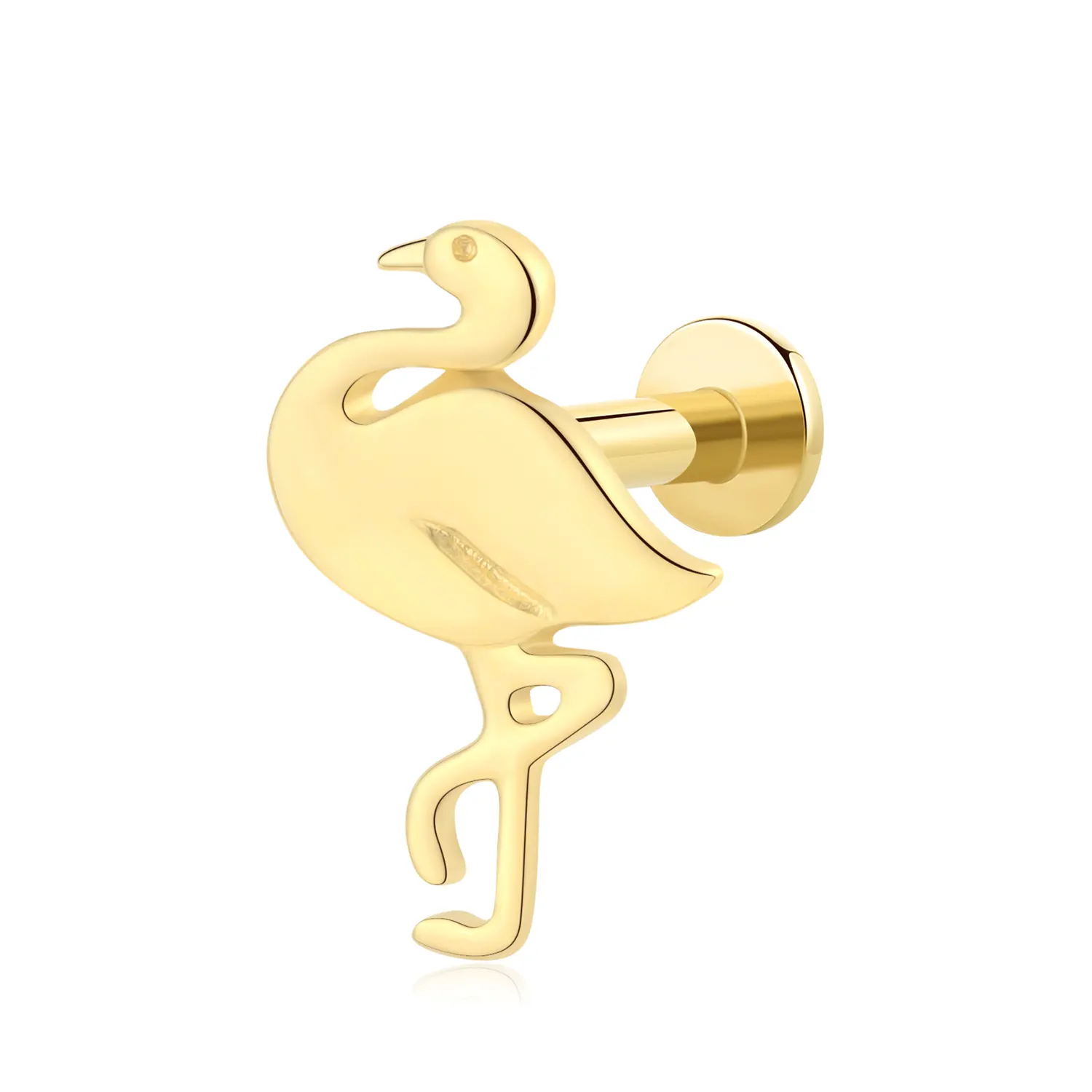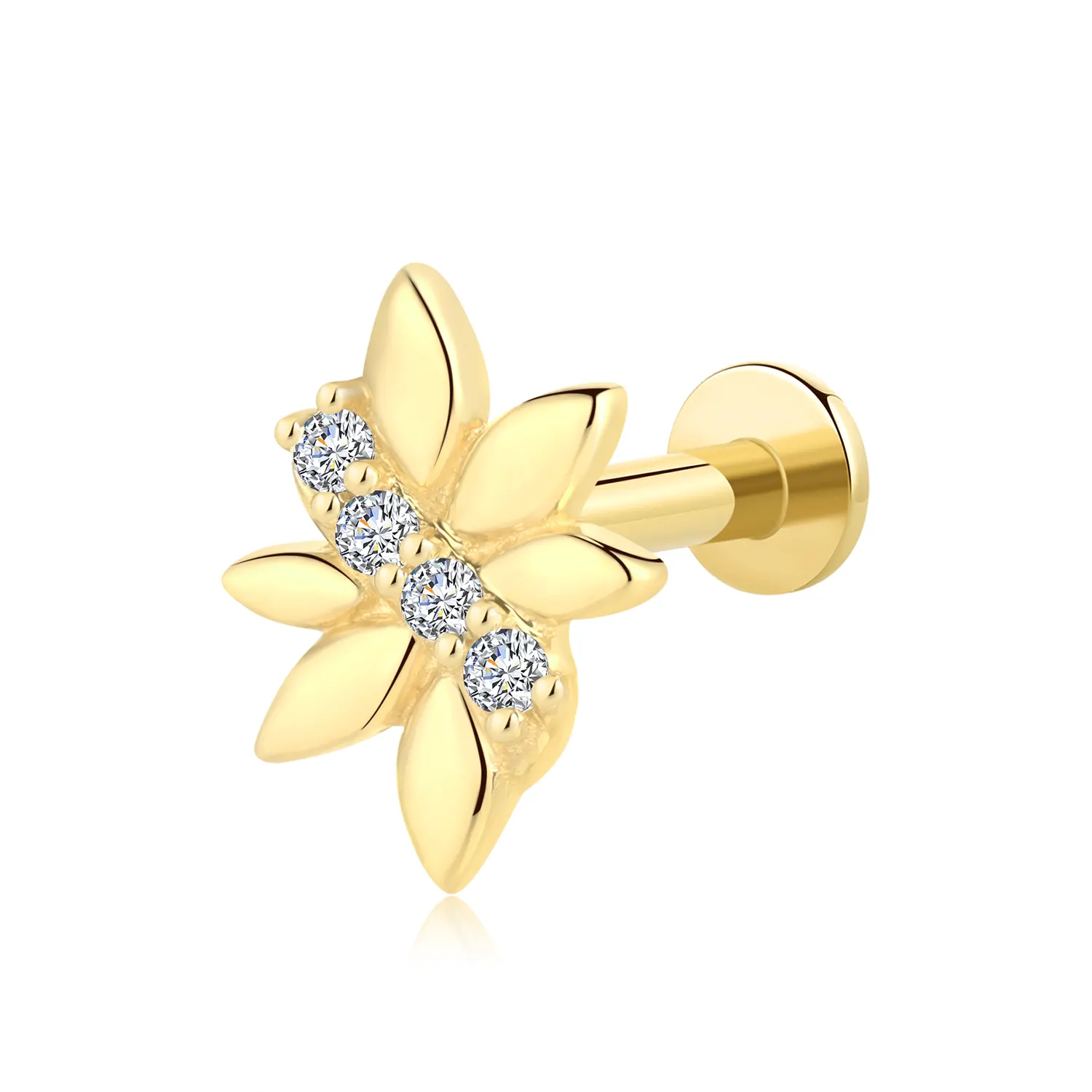Email:wholesale@goldpiercingfactory.com WhatsApp:+14086905740


Surface piercings are super cool, trendy, and a neat way to show your style. But they need special care to heal right. Unlike regular piercings that go through thick spots like your earlobe, surface piercings sit flat on your skin. They’re often in places like your neck, hips, chest, or collarbone. These spots move a lot, so they can get annoyed, push out, or shift if you’re not careful.
At GPF, a top maker of 14K and 18K solid gold body jewelry, we know that great jewelry and the right care make healing way easier. In this big guide, we’ll walk you through all you need to know to keep your surface piercing happy, pretty, and safe.
A surface piercing puts jewelry flat under a smooth patch of skin. It’s not like regular piercings that go straight through tissue. Here are some popular spots for surface piercings:
These piercings deal with lots of movement, rubbing, and pressure. So, good care and top-notch jewelry from GPF are super important for healing.
Picking the right jewelry is the first big step for a surface piercing. Cheap or junky jewelry can bug your skin and make it more likely to push out.
At GPF, we make 14K and 18K solid gold body jewelry that looks awesome and is gentle on your skin. Our threadless and internal designs are perfect for surface piercings because they:
Some cool picks from GPF include minimalist bars, CZ-accented labret studs, and custom OEM designs for piercing shops or stores.

Right after getting a surface piercing, your skin might puff up, turn red, or feel sore. That’s normal! Here’s what to do in those first couple of days:
This early puffiness is just your body starting to heal. Being careful now sets you up for a smooth recovery.
Cleaning is your best buddy for keeping infections away and helping your piercing heal.
Don’t use stuff like hydrogen peroxide, alcohol, or creams. They dry out your skin and slow down healing.
Besides cleaning, some extra steps make healing even better:
Most surface piercings heal great with good care. But you gotta keep an eye out for problems.
As puffiness goes down, your piercer might say to use a shorter post. This keeps the jewelry snug and stops extra wiggling. It usually happens 2–4 weeks after the piercing.
Don’t try changing the jewelry yourself unless a pro says it’s okay. Doing it wrong can hurt your skin and slow healing.
Even after your piercing heals (which takes 3–6 months), you still need to take care of it to avoid trouble:
Using strong, skin-friendly jewelry keeps your piercing happy for years with no big issues.
For over 15 years, GPF has been a favorite for piercing shops and stores looking for fancy, skin-safe jewelry. Here’s why pros pick us:
Healing starts with care, but lasting comfort comes from quality. GPF’s jewelry isn’t just pretty—it’s built to medical standards for safe, stylish piercings.
Surface piercings are awesome ways to show who you are. But they only stay great if you take good care of them. With a solid cleaning plan, smart lifestyle choices, and top-quality jewelry, your piercing will heal with no stress and lots of shine. For the best results, always pick skin-safe, high-quality jewelry from trusted folks like GPF.
Q1: How long does it take for a surface piercing to fully heal?
A: Surface piercings usually take 3 to 6 months to heal. It depends on the spot, jewelry, and how well you care for it.
Q2: Can I change my jewelry during healing?
A: Nope. Wait until the piercing is fully healed before swapping jewelry. Changing too early can hurt it and slow things down.
Q3: What jewelry material is safest for surface piercings?
A: High-quality, nickel-free stuff like 14K or 18K solid gold from brands like GPF is the safest and comfiest for long-term wear.